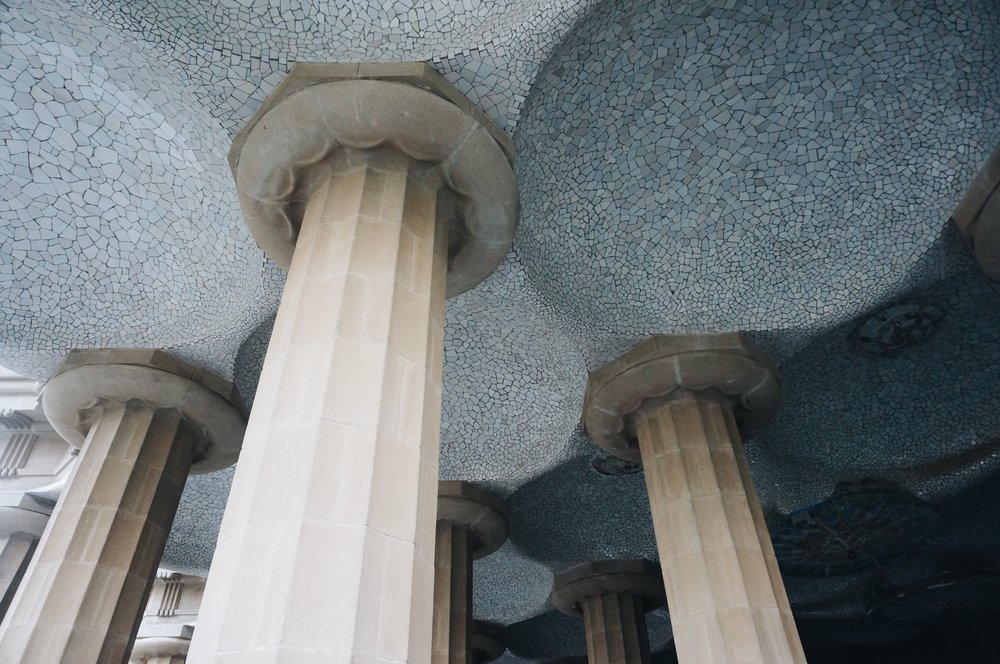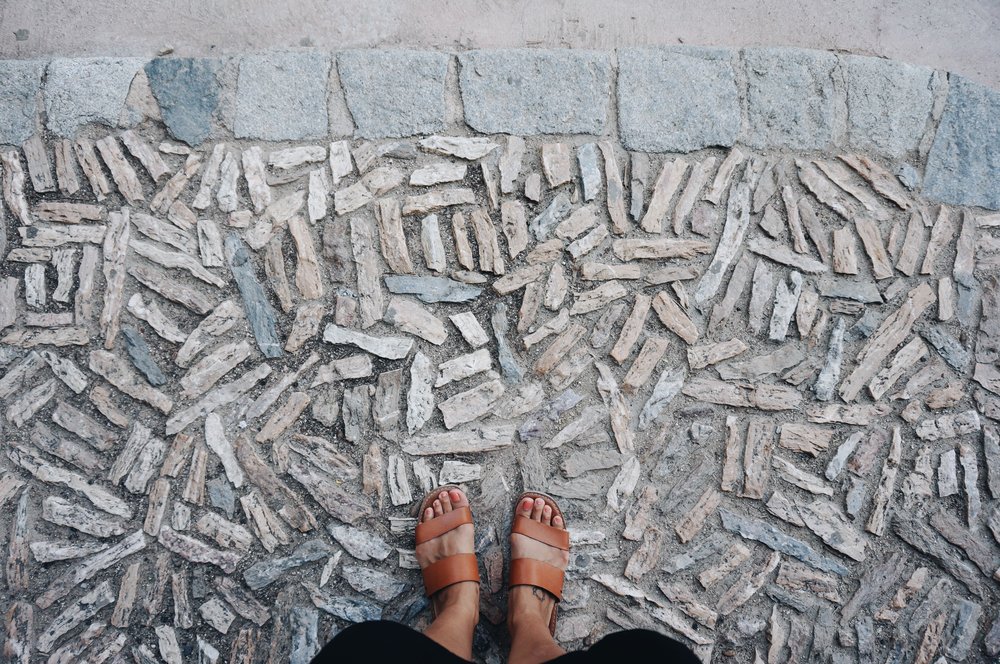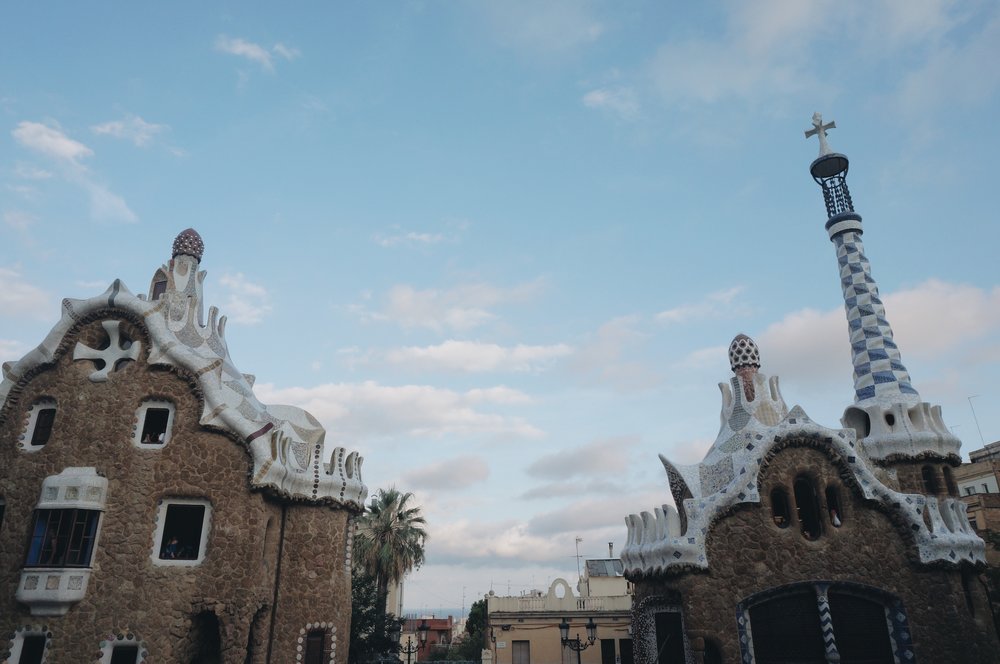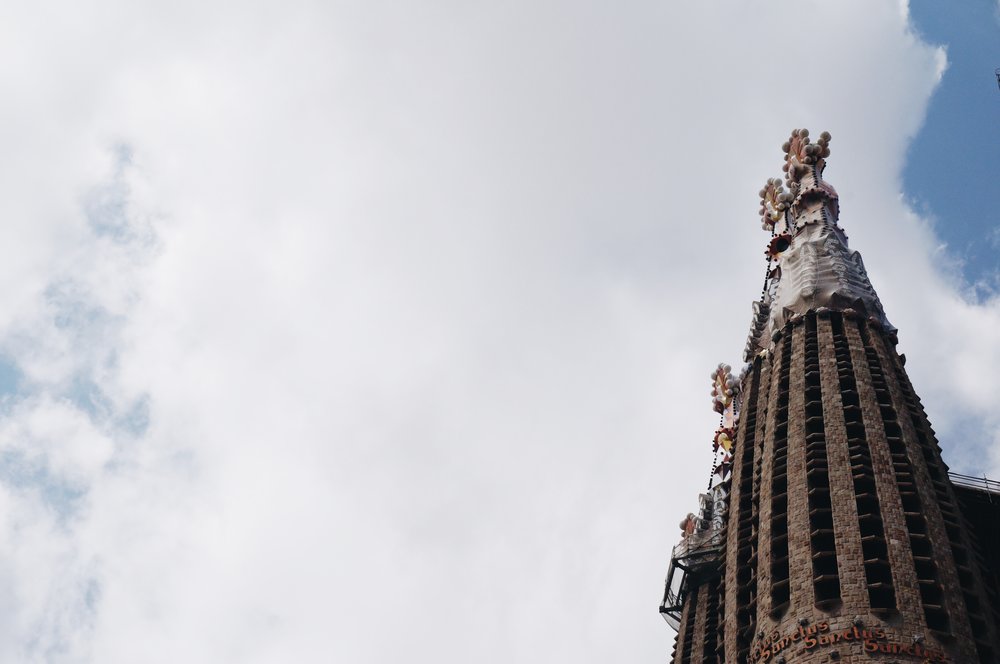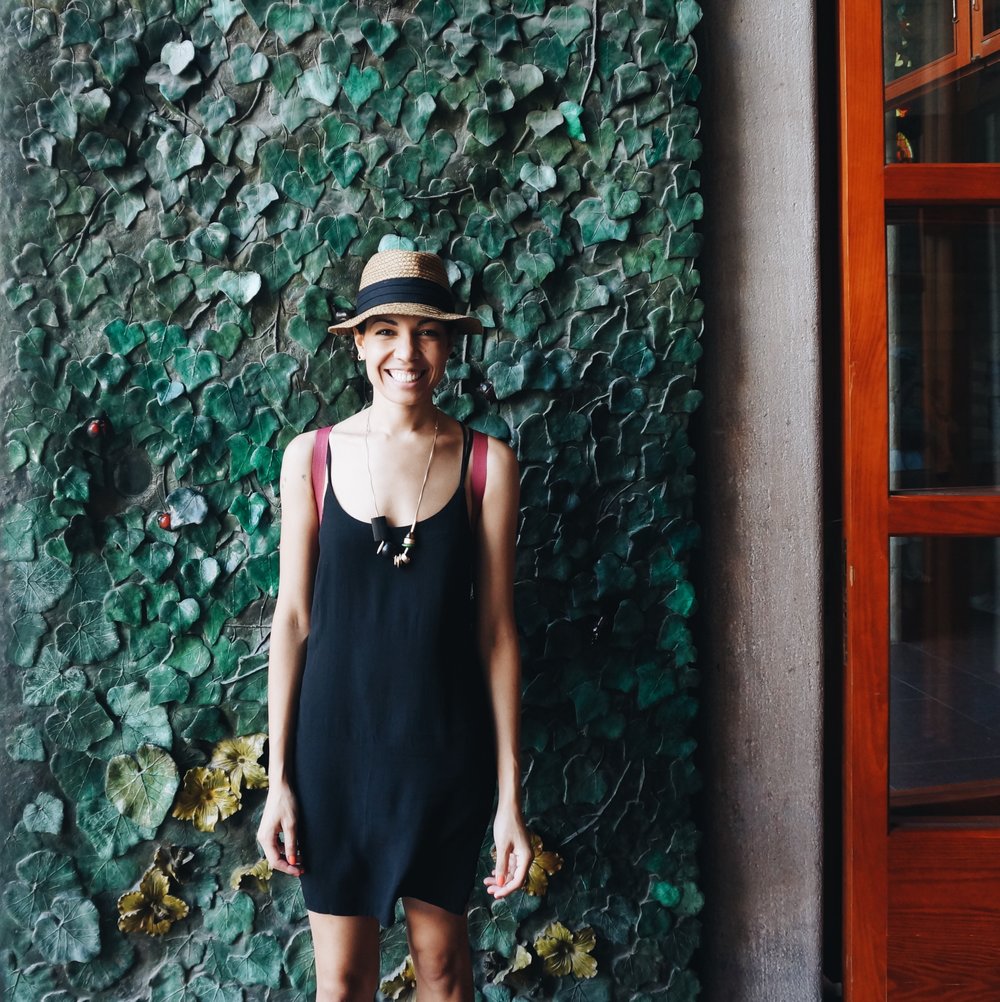Barcelona is by far the most eclectic city I have ever been to. It is magical city where beach chill meets urban metropolis, Catalan and Spanish culture mingle, and entertainment is abundant day and night. I attribute part of the city's whimsy to Catalan architect Antoni Gaudí and his imaginative and almost surreal buildings. There are more than ten organically shaped and mosaic-laden Gaudí creations in the city and these are just beauties five I visited.
Casa Batlló + La Pedrera
Casa Batlló and La Pedrera (also known as Casa Milà) are located on Passeig de Gràcia and have very distinct facades. Casa Batlló was a 1904 remodel of a private home with skeletal terraces and a dragon-esque rooftop. Shortly after Casa Batlló Gaudí took on his last private commission, La Pedrera. This home was constructed on a large corner lot and its design was based on the idea of an uninterrupted curve inside and out. Gaudí looked closely at nature for inspiration in his design and steered away from lines and angles since he felt they were not often observed in nature. The curvature of many of his buildings is what makes them stand out and surprise you when you encounter them.
Parc Güell
Parc Güell is situated atop Carmel Hill and was a failed endeavor of entrepreneur Eusebio Güell. Güell envisioned a high-end, gated community inspired by English garden city movement. Gaudí designed the community master plan which included gardens, a covered marketplace and footpaths, and a communal square with outlook point. What was meant to be an exclusive community far away from the industrializing city (in the year 1900) is now a public park open for anyone (who is willing to pay a modest entrance fee) to enjoy. Only two of the intended sixty homes were ever built on the estate (one of which Gaudí lived in until his death) but there are various examples of innovative infrastructure that mimics the nature that surrounds it.
La Sagrada Familia
Sagrada Família is undoubtedly Gaudí's greatest work. It is an incredibly detailed and massive in size basilica that has been under construction since 1882. 134 years! Inspired after a trip to the vatican bookseller and founder of the Spiritual Association of Devotees of St. Joseph, Josep Maria Rocabella commissioned the church.Gaudí was not the original intended designer but in a serendipitous series of events took on the design a year into construction. After the original architect, Francisco del Villar dropped the project due to creative disagreements with the client's advising architect Joan Martorell the project was offered to Martorell. Martorell declined the offer but recommended Anotoni Gaudí for the job who accepted in 1883 and completely redesigned what was going to be a gothic style church into his masterpiece.
When Gaudí died in 1926 the basilica was less that a quarter complete and later experienced further construction delays during the Spanish Civil War. The project was resumed in the 1950s but without many of the original models, which were destroyed and damaged during the war.
On the grounds is the Sagrada Família Schools, and personally my favorite Gaudí structure. The wavy brick building is simple yet completely unique. And as the most "conventional" of all the Gaudí buildings I saw it was the only one I felt I could full take in, but that may just be due to the smaller scale! I also love this building because it was created for the children of construction workers to study while their fathers worked on the church.
Antoni Gaudí immediately conjures the image of Barcelona, and Barcelona wouldn't be the same without the ornate and quirky works of Gaudí. Every single one of his works are worth a long look to get to know the city that houses them.








